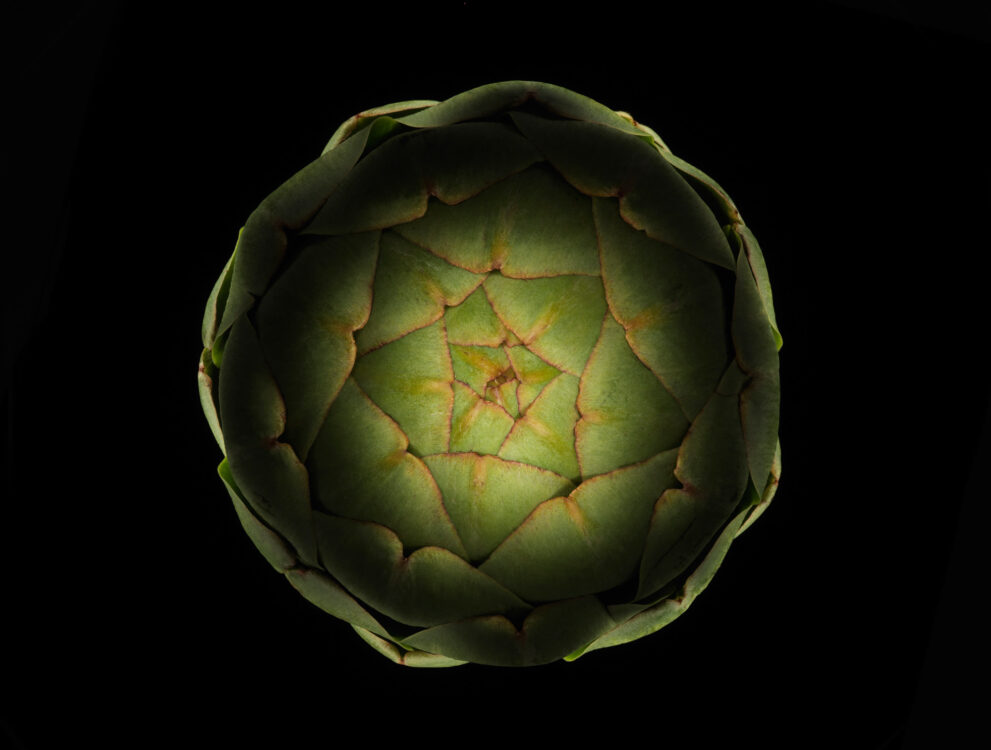The illumination of the artichoke does show darker areas (almost black) but no shadows. To get a shadowless light, you might want to try a ringflash which would, however, not work in this situation - the illumination would be very even.

A Picolite with the narrowest grids would be precise enough to light only a very small part of the object, but it would create dominant shadows. So, the Picolite rotates around the artichoke (like a ringflash!) and fires constantly. 10 flashes hit the centre, 20 the periphery.

In a dark studio, the camera remains open long enough for all 30 "exposures" to reach the sensor.
In this way, the qualities of a ringflash and a Picolite are combined.


